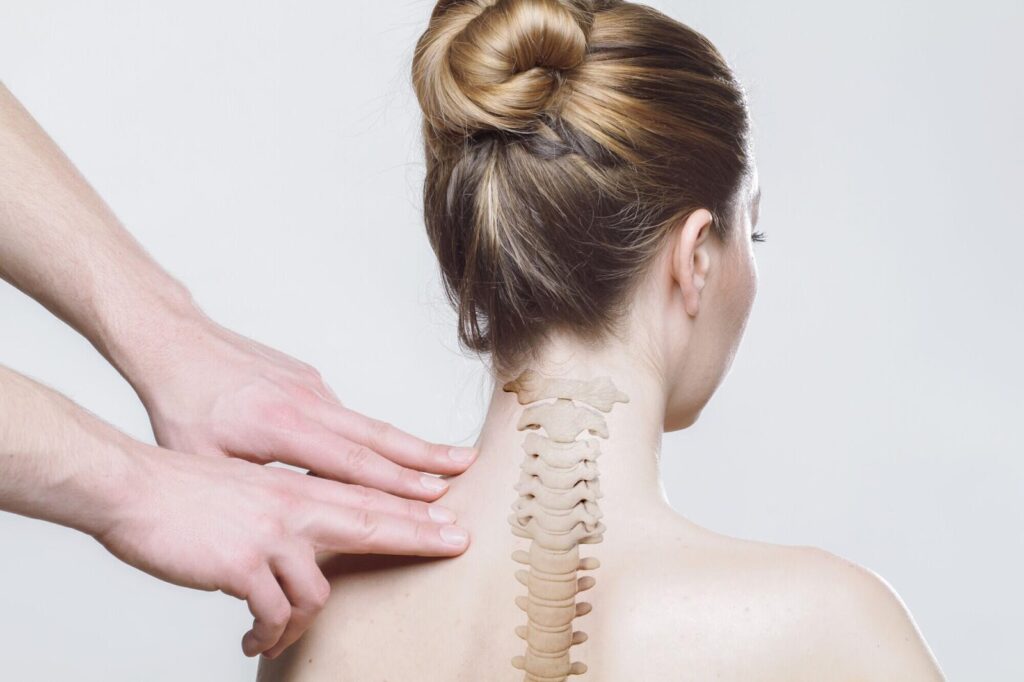Cervical disc degeneration is a common condition affecting neck discs, especially with age. The cervical spine has seven vertebrae separated by discs that cushion and allow movement. Over time, these discs can deteriorate, causing symptoms and complications. Understanding neck disc changes over time helps recognize degeneration signs and explore treatment options.
What is Cervical Disc Degeneration?
Cervical disc degeneration refers to the gradual wear and tear of the discs between the vertebrae in the neck. These discs, which function as cushions, allow for flexibility and movement. Over time, they lose water content, becoming less effective at absorbing shocks. This can lead to a decrease in disc height, which puts pressure on the surrounding nerves and tissues, causing discomfort and restricted movement. In severe cases, where nerve compression becomes significant, procedures such as anterior cervical discectomy and fusion may be required to alleviate pain and stabilize the spine. The condition progresses with age and can be exacerbated by injury or poor posture.
The Aging Process and Your Neck Discs
The discs in your neck can handle significant stress but aren’t immune to aging. By middle age, signs of disc degeneration often appear. Early stages might go unnoticed as the body compensates for initial changes. Over time, discs lose hydration and flexibility, becoming brittle. This can cause small tears in the disc’s outer layer, leading to discomfort or potentially a herniation. As discs degenerate, the risk of conditions like spinal stenosis or osteoarthritis increases.
Symptoms of Cervical Disc Degeneration
Symptoms of cervical disc degeneration vary based on severity and the discs affected. Common symptoms include neck pain, stiffness, and reduced range of motion. Sometimes, degeneration can compress nerves, causing more severe symptoms, such as:
- Radiating pain into the shoulders, arms, or hands
- Numbness or tingling in the extremities
- Muscle weakness in the arms or hands
- Headaches, often originating from the neck
These symptoms can worsen with physical activity, prolonged periods of sitting, or poor posture. Many people find that the pain is more pronounced in the morning and gradually improves throughout the day.
How Cervical Disc Degeneration Progresses
Cervical disc degeneration is a progressive condition, meaning that it worsens over time. In the early stages, the degeneration may only cause mild discomfort or occasional stiffness. However, as the condition progresses, the discs may become more damaged, leading to more severe symptoms. One potential complication of advanced cervical disc degeneration is the formation of bone spurs or osteophytes. These small, bony growths can develop along the edges of the vertebrae as a result of the body’s attempt to stabilize the spine. While bone spurs themselves are not painful, they can press against the spinal cord or nerves, causing pain, numbness, or even loss of function. In some cases, the disc may rupture or herniate, allowing the inner gel-like substance to push through the outer layer. A herniated disc can compress nearby nerves, leading to significant pain and neurological symptoms.
Diagnosis of Cervical Disc Degeneration
If you are experiencing symptoms of cervical disc degeneration, a healthcare professional will likely start with a physical examination, assessing your range of motion, reflexes, and muscle strength. Imaging tests such as X-rays, MRI scans, or CT scans may be used to confirm the diagnosis and evaluate the extent of the disc degeneration. An X-ray can show a narrowing of the space between the vertebrae, while an MRI provides detailed images of the discs, nerves, and surrounding tissues. These tests are useful in determining the severity of the degeneration and identifying any complications, such as nerve compression or bone spurs.
Treatment Options for Cervical Disc Degeneration
The treatment for cervical disc degeneration depends on the severity of the condition and the symptoms you are experiencing. For mild cases, conservative treatments are often recommended. These can include:
- Physical therapy to enhance neck-supporting muscle strength and improve flexibility
- Pain management techniques, such as over-the-counter or prescription medications
- Corticosteroid injections to reduce inflammation and relieve pain
- Lifestyle modifications, such as improving posture and avoiding activities that strain the neck
In more advanced situations, surgical interventions might be required to effectively tackle the underlying issues. These procedures typically employ precise techniques to correct or alleviate the problem, ensuring improved outcomes for the patient.
Cervical disc degeneration is a natural part of aging, but if untreated, it can cause discomfort and lower quality of life. Knowing what happens to your neck discs over time helps you recognize symptoms and seek treatment early. Whether through conservative treatments or surgical options, managing cervical disc degeneration can help maintain mobility and reduce pain. If you experience symptoms, consult a healthcare professional to find relief.






